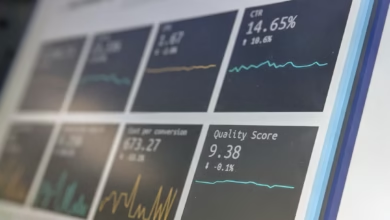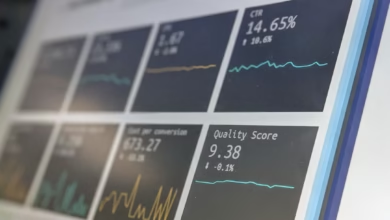Mastering Crypto Trading: Essential Strategies and Insights for Success in the Digital Currency Market

In recent years, crypto trading has emerged as a revolutionary force in the financial markets, captivating the attention of both seasoned investors and newcomers alike. Unlike traditional stock trading or forex trading, which are governed by long-established principles and regulatory frameworks, the world of digital currencies such as Bitcoin and Ethereum offers a unique landscape filled with opportunities and challenges. As the popularity of cryptocurrencies continues to rise, understanding the key differences between crypto trading and other forms—such as options trading, futures trading, and commodities trading—is essential for anyone looking to dive into this dynamic market.
This article will provide a comprehensive overview of crypto trading, exploring essential trading strategies from day trading to swing trading. We'll delve into risk management techniques and the importance of trading psychology, equipping you with the tools necessary to navigate the volatile world of digital currencies. Whether you're interested in algorithmic trading, high-frequency trading, or social trading, this guide aims to enhance your market analysis skills and help you develop effective trading strategies. Join us as we unravel the complexities of crypto trading and prepare you to make informed decisions in this fast-paced environment.
- 1. Understanding Crypto Trading: Key Differences from Stock and Forex Trading
- 2. Essential Trading Strategies: From Day Trading to Swing Trading in the Crypto Market
- 3. Risk Management and Trading Psychology: Navigating the Volatile World of Crypto Trading
1. Understanding Crypto Trading: Key Differences from Stock and Forex Trading
Understanding crypto trading is essential for anyone looking to dive into the world of digital currencies. While it may seem similar to stock trading or forex trading at first glance, there are key differences that set crypto trading apart.
One of the most significant distinctions is the market itself. Crypto trading occurs in a decentralized environment, unlike the regulated exchanges that govern stock and forex trading. This decentralization means that cryptocurrencies like Bitcoin and Ethereum are traded on various online trading platforms, often with less structure and oversight compared to traditional markets.
Another difference is the volatility inherent in cryptocurrencies. Crypto trading is known for its rapid price fluctuations, which can be both an opportunity and a risk. Traders often engage in day trading or swing trading to capitalize on these price movements. In contrast, stock trading tends to be more stable, allowing for longer-term investment strategies.
Leverage trading and margin trading are also more prominent in crypto trading. These practices enable traders to amplify their positions, but they come with increased risk. In forex trading, leverage is commonly used, but the levels found in crypto trading can be significantly higher, leading to potential for both large gains and significant losses.
When it comes to trading strategies, crypto traders often utilize technical analysis and fundamental analysis, similar to traders in other markets. However, the unique nature of cryptocurrencies requires a deeper understanding of blockchain technology and market sentiment. Trading psychology plays a crucial role as well; the emotional highs and lows can be more pronounced in the volatile crypto space.
Furthermore, the rise of derivatives trading in the crypto market, including options trading and futures trading, offers additional opportunities for traders to hedge their positions or speculate on future price movements. Concepts like arbitrage trading, which involves exploiting price differences across exchanges, have also gained traction in the crypto world.
In summary, while there are fundamental similarities between crypto trading and other forms of trading such as stock trading, forex trading, and commodities trading, the unique characteristics of the cryptocurrency market necessitate tailored trading strategies and risk management approaches. Understanding these key differences is crucial for anyone looking to succeed in this dynamic and rapidly evolving financial landscape.
2. Essential Trading Strategies: From Day Trading to Swing Trading in the Crypto Market
In the dynamic world of crypto trading, choosing the right trading strategy is crucial for success. Traders can adopt various approaches depending on their risk tolerance, market knowledge, and investment goals. Here, we discuss two essential trading strategies: day trading and swing trading, both of which have their distinct characteristics and benefits in the crypto market.
Day trading is a popular strategy that involves executing multiple trades within a single day. Traders capitalize on short-term price movements of cryptocurrencies like Bitcoin and Ethereum, often using technical analysis to identify entry and exit points. This method requires a keen understanding of market analysis, as day traders must be able to react quickly to price fluctuations. Engaging in high-frequency trading or scalping—two sub-categories of day trading—can further enhance profit potential, albeit with increased risk. Successful day trading relies heavily on effective risk management, as traders must remain disciplined in their approach to leverage trading and margin trading to avoid significant losses.
On the other hand, swing trading is a longer-term approach that focuses on capturing price swings occurring over days or weeks. This strategy allows traders to hold positions longer than day traders, providing more time to analyze market trends and fundamental factors influencing price movements. Swing traders utilize both technical and fundamental analysis to identify potential entry points, often looking for patterns in the charts or news events that could drive the market. While swing trading can be less stressful than day trading, it still requires a solid understanding of trading psychology, as traders must be patient and resilient in the face of market volatility.
Both day trading and swing trading can be effectively executed on various online trading platforms that offer features such as algorithmic trading and copy trading. By leveraging these tools, traders can enhance their strategies and improve their chances of success in the competitive landscape of crypto trading. Ultimately, the choice between day trading and swing trading should align with each trader's individual style, risk appetite, and goals, ensuring a tailored approach to navigating the complexities of the crypto market.
References:
– Investopedia. (2023). Day Trading vs. Swing Trading: What's the Difference? Retrieved from https://www.investopedia.com/terms/d/day-trading.asp
– CoinMarketCap. (2023). What Is Swing Trading? Retrieved from https://coinmarketcap.com/alexandria/glossary/swing-trading
3. Risk Management and Trading Psychology: Navigating the Volatile World of Crypto Trading
In the fast-paced world of crypto trading, effective risk management and a strong understanding of trading psychology are crucial for long-term success. The volatility of digital currencies such as Bitcoin and Ethereum can create significant opportunities, but it also presents substantial risks that traders must navigate carefully.
One of the primary strategies in risk management is to set clear stop-loss orders. This practice ensures that traders limit their potential losses by automatically exiting a position when a specified price is reached. In addition to stop-loss orders, diversifying a trading portfolio can help mitigate risks. Traders can explore not just crypto trading but also consider other assets like commodities trading, index trading, or even derivatives trading. This diversification allows traders to spread their risk across various markets, reducing the impact of a downturn in any single asset class.
Understanding trading psychology is equally important. The emotional rollercoaster of trading can lead to impulsive decisions, particularly in volatile markets. Traders must cultivate discipline to stick to their trading strategies, whether they are focusing on day trading, swing trading, or scalping. Techniques such as technical analysis and fundamental analysis can provide valuable insights, helping traders make informed decisions based on market trends rather than emotions.
Moreover, leveraging tools like algorithmic trading and social trading can enhance trading strategies. These technologies allow traders to automate their trades based on pre-set criteria or follow the strategies of successful traders. However, it’s essential to approach leverage trading and margin trading with caution, as they can amplify both profits and losses.
Ultimately, a trader's mindset plays a pivotal role in determining their success in crypto trading. By combining robust risk management strategies with a strong understanding of trading psychology, traders can better navigate the complexities of this dynamic market. Whether engaging in high-frequency trading or exploring copy trading opportunities, maintaining a well-rounded approach to risk and mental fortitude is essential for thriving in the world of digital currency trading.
In conclusion, navigating the world of crypto trading requires a solid understanding of its unique characteristics compared to traditional stock and forex trading. As digital currencies like Bitcoin and Ethereum continue to gain traction, traders must adapt their strategies to respond effectively to the market's inherent volatility. By employing essential trading strategies such as day trading and swing trading, and incorporating robust risk management techniques, traders can position themselves for success in this rapidly evolving landscape.
Moreover, grasping the psychological aspects of trading is crucial for maintaining discipline and making informed decisions. Whether you choose to engage in algorithmic trading or adopt a more hands-on approach through social trading and copy trading, the importance of thorough market analysis—both technical and fundamental—cannot be overstated. As you explore various trading avenues, including options trading, futures trading, and even commodities trading, remember that successful crypto trading hinges on continuous learning and adaptability.
With the right mindset and a well-crafted trading strategy, the opportunities within the realm of crypto trading are vast. Embrace the journey, stay informed, and leverage the tools available through online trading platforms to enhance your trading experience. As the market continues to evolve, so too will your potential for growth and profitability in this dynamic field.
References:
[Include relevant sources here]




